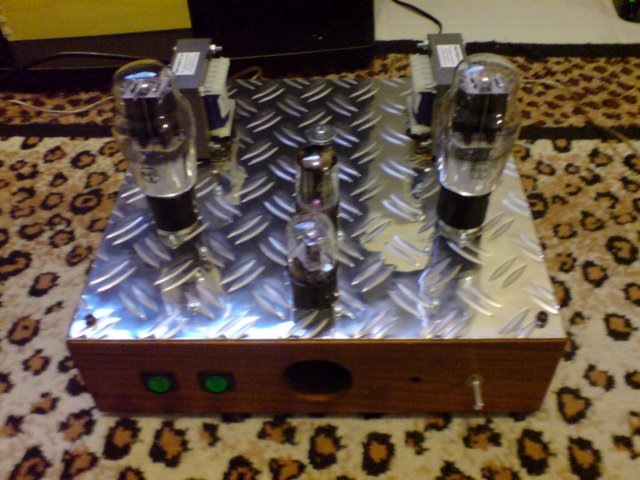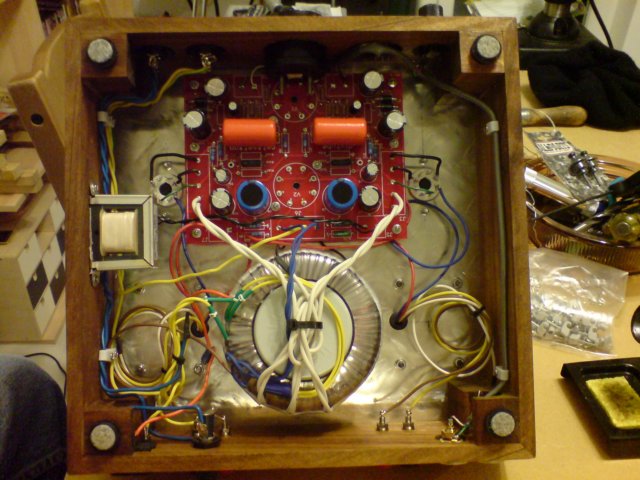I am pleased.
Thanks to Shannon and all the DIY Tubers!


hembrook wrote:The hum comes from the right speaker. My voltage divider coming off the heater network ties to the left input, which is noticeably quieter. Any suggestions?
Would a variable pot instead of the 51 and 47 ohm resistors make a difference? Or am I thinking the wrong direction here?

hembrook wrote:The hum comes from the right speaker. My voltage divider coming off the heater network ties to the left input, which is noticeably quieter. Any suggestions?
hembrook wrote:Can I tie a 1 ohm resistor from TP1 and TP2 to ground, then measure the voltage drop across this to calculate tube plate (cathode) current?
separks wrote:hembrook wrote:Can I tie a 1 ohm resistor from TP1 and TP2 to ground, then measure the voltage drop across this to calculate tube plate (cathode) current?
No, since the 1 ohm would be in parallel with the bias resistors. Just divide the voltage at TP1 and TP2 by 900.
Users browsing this forum: No registered users and 19 guests